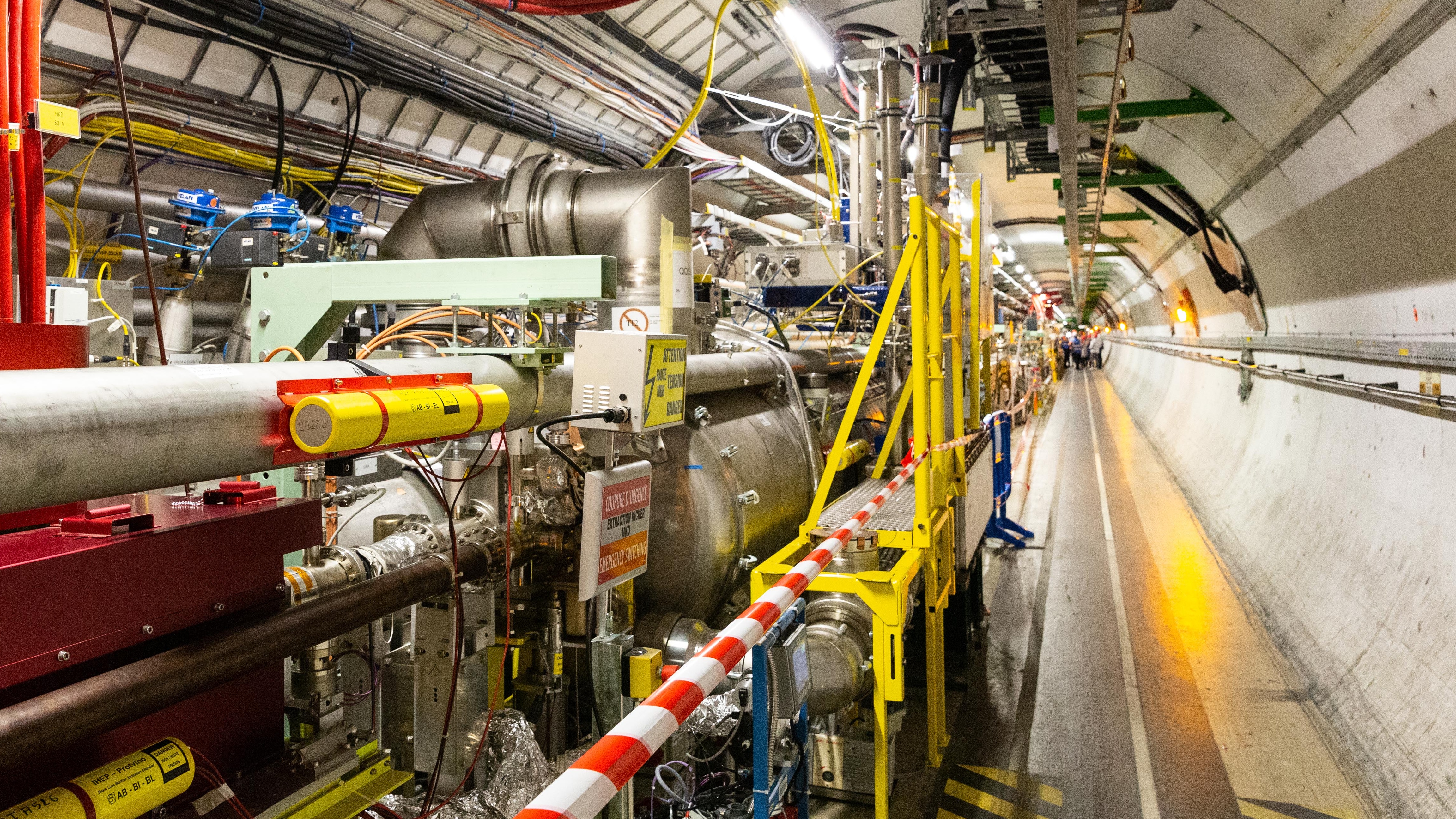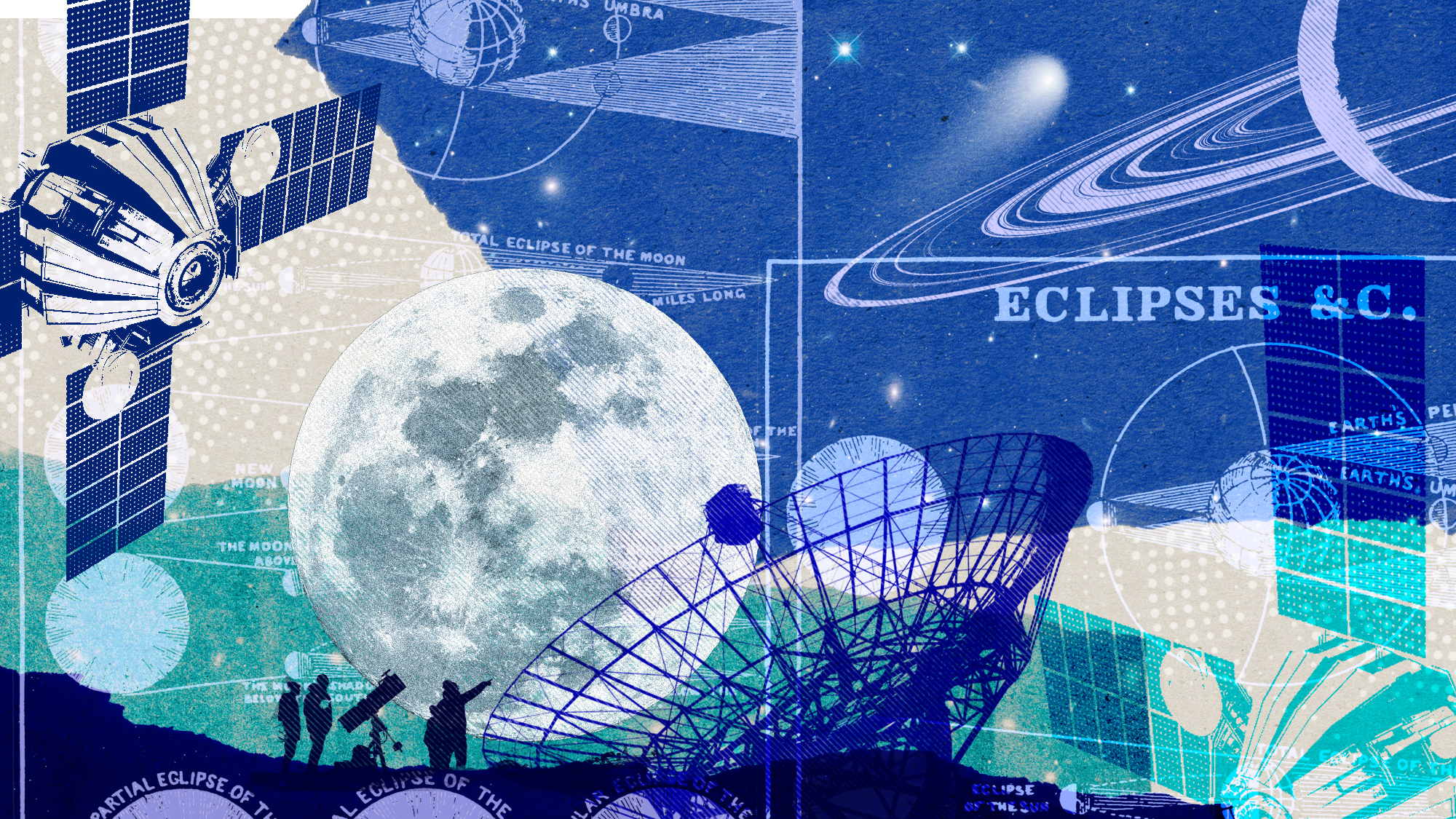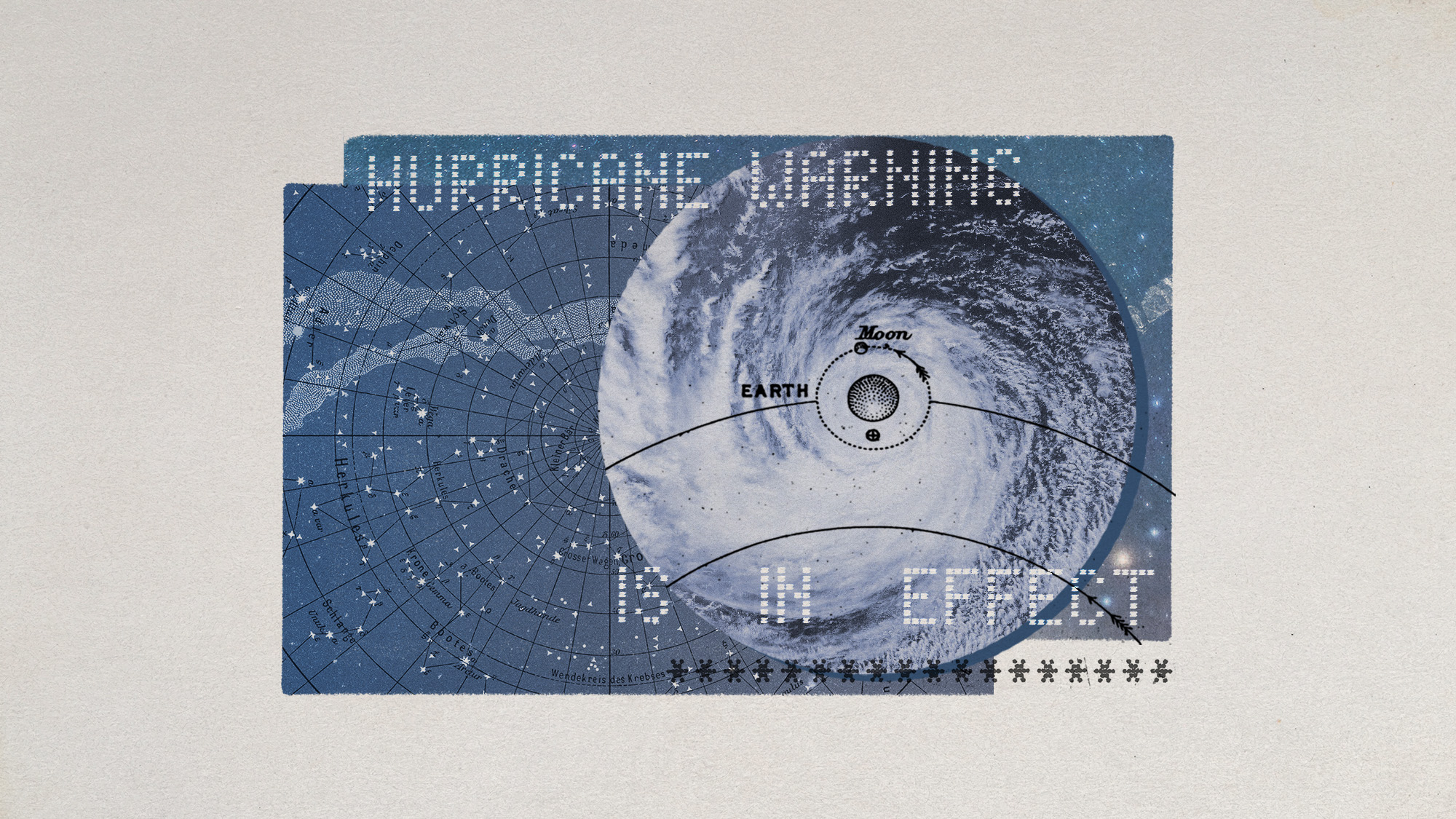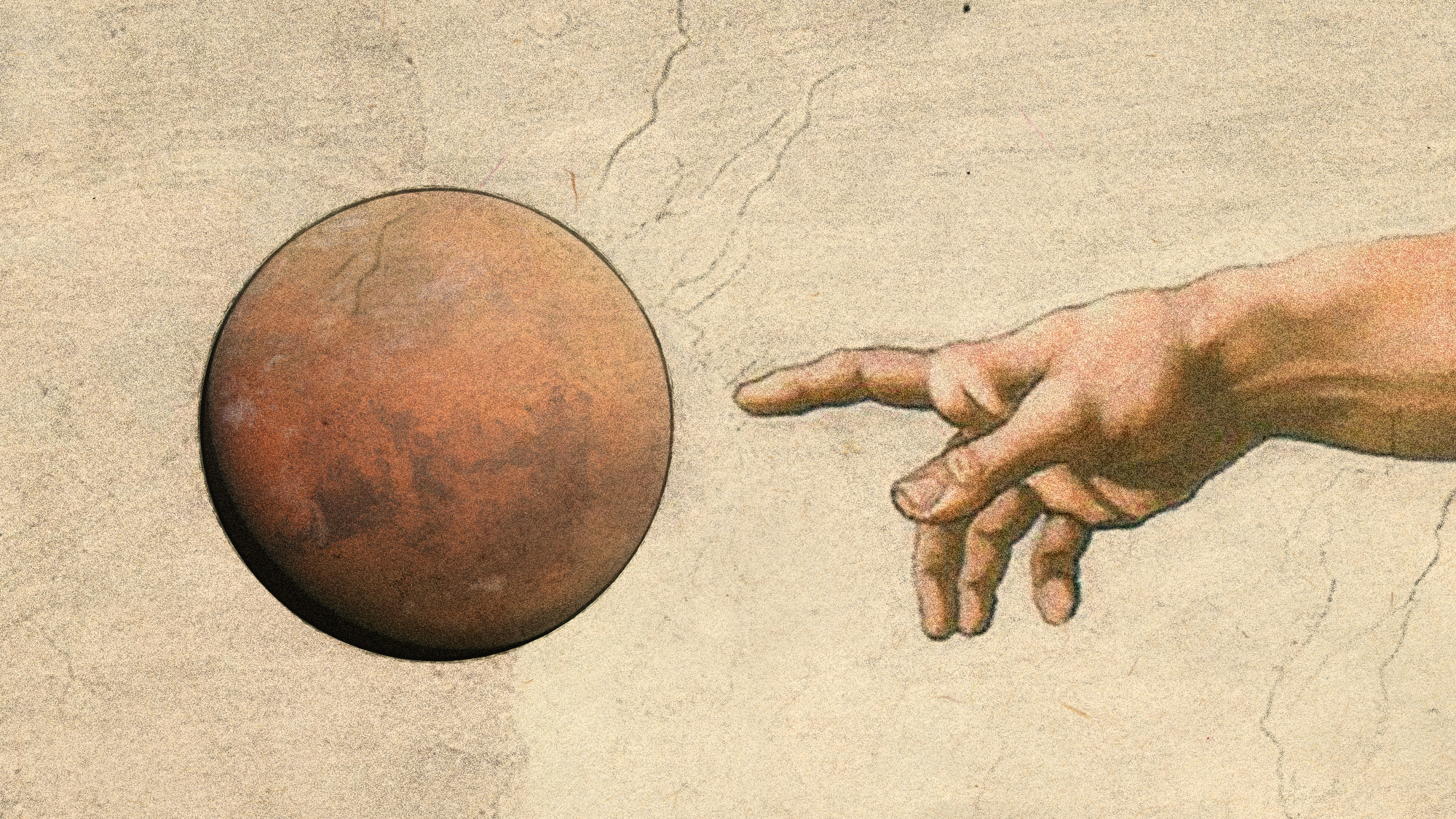The fifth force of nature
Unexpected behaviour of subatomic particle could change our understanding of the universe

A tiny subatomic particle appears to be disobeying the laws of physics in a way that scientists say could change our fundamental understanding of how the universe works.
The “particle celebre” is the muon, like an electron but far heavier, and “is an integral element of the cosmos” reports The New York Times.
Scientists have observed the particle behaving in a way that is significantly different to how it should under the accepted laws of physics, suggesting the particle is “sensitive to something” outside our current understanding of the universe.
The Week
Escape your echo chamber. Get the facts behind the news, plus analysis from multiple perspectives.

Sign up for The Week's Free Newsletters
From our morning news briefing to a weekly Good News Newsletter, get the best of The Week delivered directly to your inbox.
From our morning news briefing to a weekly Good News Newsletter, get the best of The Week delivered directly to your inbox.
Currently, we divide the forces that govern our lives into four categories: gravity; electromagnetism; the strong force, which holds particles together; and the weak force, which is involved in radioactive decay.
But the “standard model” – the currently accepted theory to explain how the building blocks of the universe behave – can’t account for gravity, leading scientists to believe that the model “cannot be the whole story”, and so they have been “looking to move beyond it”, says The Times.
Now they may be able to. Scientists at Fermilab, a particle accelerator near Chicago in the United States, spun muons around a 15-metre magnetic ring at nearly the speed of light, and noted the speed at which they wobbled. The muons’ behaviour in the magnetic field was different from what would be expected using the standard model: they wobbled at a faster rate.
This suggests, said Chris Polly from Fermilab, “there might be monsters we haven’t yet imagined, that are emerging from the vacuum interacting with our muons”. In other words: a new force or subatomic particle.
A free daily email with the biggest news stories of the day – and the best features from TheWeek.com
But the physicists are celebrating cautiously for now, as the results have a one in 40,000 chance of being a statistical fluke. The statistical confidence level is 4.1 sigma, and a level of 5 sigma (one in 3.5 million chance of being a coincidence) is needed to hail the findings as a new discovery, says the BBC.
But the results do chime with those of a previous experiment, Muon g2, run in Brookhaven National Laboratory, New York, in 2001.
“After 20 years of people wondering about this mystery from Brookhaven, the headline of any news here is that we confirmed the Brookhaven experimental results,” Dr Polly said.
The results could help explain some of the “big puzzles” of the universe, says the BBC. For example, the expansion of the universe, which has previously been attributed to a “mysterious” phenomenon called dark energy, could in fact be evidence of a fifth force.
“I’m very excited,” said Marcela Carena, head of theoretical physics at Fermilab, but not part of the experiment. “I feel like this tiny wobble may shake the foundations of what we thought we knew.”
Sorcha Bradley is a writer at The Week and a regular on “The Week Unwrapped” podcast. She worked at The Week magazine for a year and a half before taking up her current role with the digital team, where she mostly covers UK current affairs and politics. Before joining The Week, Sorcha worked at slow-news start-up Tortoise Media. She has also written for Sky News, The Sunday Times, the London Evening Standard and Grazia magazine, among other publications. She has a master’s in newspaper journalism from City, University of London, where she specialised in political journalism.
-
 Political cartoons for January 3
Political cartoons for January 3Cartoons Saturday's political cartoons include citizen journalists, self-reflective AI, and Donald Trump's transparency
-
 Into the Woods: a ‘hypnotic’ production
Into the Woods: a ‘hypnotic’ productionThe Week Recommends Jordan Fein’s revival of the much-loved Stephen Sondheim musical is ‘sharp, propulsive and often very funny’
-
 ‘Let 2026 be a year of reckoning’
‘Let 2026 be a year of reckoning’Instant Opinion Opinion, comment and editorials of the day
-
 The 5 biggest astronomy stories of 2025
The 5 biggest astronomy stories of 2025In the spotlight From moons, to comets, to pop stars in orbit
-
 Blue Origin launches Mars probes in NASA debut
Blue Origin launches Mars probes in NASA debutSpeed Read The New Glenn rocket is carrying small twin spacecraft toward Mars as part of NASA’s Escapade mission
-
 ‘The Big Crunch’: why science is divided over the future of the universe
‘The Big Crunch’: why science is divided over the future of the universeThe Explainer New study upends the prevailing theory about dark matter and says it is weakening
-
 The moon is rusting
The moon is rustingUnder the radar The Earth is likely to blame
-
 Panspermia: the theory that life was sent to Earth by aliens
Panspermia: the theory that life was sent to Earth by aliensUnder The Radar New findings have resurfaced an old, controversial idea
-
 Africa could become the next frontier for space programs
Africa could become the next frontier for space programsThe Explainer China and the US are both working on space applications for Africa
-
 Hurricanes are not exclusive to Earth. They can happen in space.
Hurricanes are not exclusive to Earth. They can happen in space.Under the radar These storms may cause navigational problems
-
 Answers to how life on Earth began could be stuck on Mars
Answers to how life on Earth began could be stuck on MarsUnder the Radar Donald Trump plans to scrap Nasa's Mars Sample Return mission – stranding test tubes on the Red Planet and ceding potentially valuable information to China